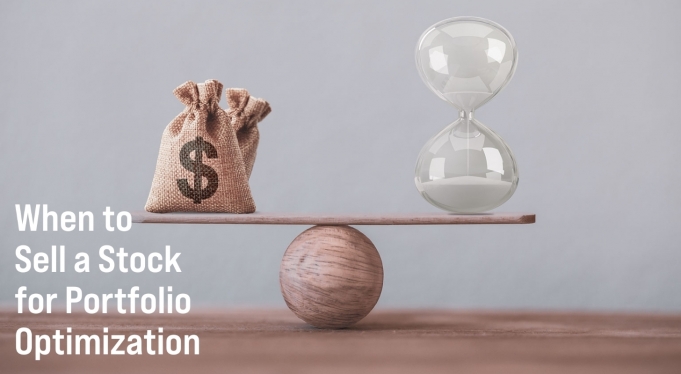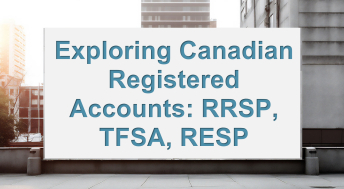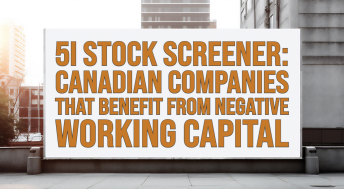One of the toughest questions an investor faces is when to sell. It is already hard enough to determine what the right investments are and when the right time is to make them. Add in emotional investments that accrue as one holds the stock and emotions swirling around embedded gains or losses from the holding and conflicting opinions everywhere. It is no wonder why it is such a tough question to answer. So, we are here to help.
We think the question of when to sell first needs the appropriate context and should be split into two parts:
1. Portfolio based decisions
2. Investment specific, or fundamental decisions.
To make this a bit easier to digest, we are going to split this into two parts, the first being the easier one in our view. To start, we need to look at the differences between portfolio and fundamental decisions.
Portfolio based selling versus investment specific (fundamental) selling
There is a small but important distinction between the two. In short, portfolio based selling should always trump investment specific reasons.
Since a portfolio is the culmination of an individual’s savings and net worth, an investor needs to ensure they protect what they have been saving for over their entire life. If the returns of one’s entire portfolio become at risk from a single stock, then the safety of the whole portfolio trumps that of the specific holding regardless of the prospects of the stocks. This speaks to concepts such as diversification and risk management.
This is an important concept to keep in mind. Again, if there is a reason to sell based on its impact on one’s entire portfolio, it should always take precedence over the merits of any individual stock. Fortunately, selling based on a portfolio allocation is much easier than selling due to investment merits. Here are the reasons we think an individual should sell a stock based on their portfolio:
When a stock has become too large of a position in a portfolio
This point should help to expand on the above two paragraphs. In general, if a portfolio becomes a bet on a single stock, it needs to be sold. Not necessarily sold outright, but the position needs to be reduced to a weight that is appropriate.
What that appropriate weight is depends on the individual, but something at or below 5% of a portfolio is a good starting point. The key point here is that even if an investor is certain that the stock will double and they, in turn, have loaded up on shares, it does not matter. From a portfolio perspective, the weighting should be reduced.
The simple reason as to why, is that no one knows how a stock will perform with certainty. You can weigh the probabilities all you want but the myriad of uncertainties such as investor sentiment and psychology, geo-political risks, central bank initiatives, industry dynamics and specific company events mean that there is no such thing as complete certainty when investing. Because of this, positions need to reflect this and be managed prudently. When faced with a position that is too large relative to the portfolio, it needs to be sold in some shape or form in our view, because that retirement you have saved up for is in danger if you are wrong.
When a stock position is too small relative to the portfolio or there are too many stocks held
This is the antithesis of the above point. When a position becomes too small or a portfolio holds so many positions that the weightings are small, we put it into the ‘why bother’ category and view it as best to simply sell it and move on (or increase the position).
More specifically, we would put stocks with a weight below 1% of a portfolio into the ‘why bother’ category. It is a case of simple math:
Let's assume you have a $100,000 portfolio and a 1% position, or $1,000, invested in stock ‘X’. For this stock to have any impact on the portfolio and in turn the individual’s net worth, the holding would need to more than double. So let us assume the stock doubles to $2,000. Yes, the extra money is nice, but hardly changes the net worth of an individual. Add in the probability that getting a double is low any given year and the fact that the pressure to sell it when it is up 50% or 75% would be high, a lot of things would need to go right for that 100% gain to actually happen. The real mistake here is that there was a big winner in the portfolio but the position sizing was not appropriate.
In short, viewing positions at 1% of a portfolio or lower with an eye to do ‘something’ is a good course of action. The investor is either not comfortable with the holding exhibited by the fact it holds such a low weighting, and in turn it should be sold anyway, or they like the prospects and should have a more material position.
If positions like this are left unchecked, it leads to complex and tough to monitor, closet-indexed portfolios and likely a lot of effort spent for minimal return potential.
When an asset class, industry or geography becomes overrepresented
What ‘overrepresented’ means to the individual investor will differ (some can justify 80% equity allocations while others only 50%, etc.) but whatever those levels are, once the comfort zone is breached, it is time to sell something.
Asset classes and geographic allocations are too broad to touch on but for industry allocations, a good absolute maximum industry allocation target could be 20%. Regardless of views on an industry, it is hard to argue that close to a quarter of a portfolio should bet on any single industry, when you have 10 or 11 different industries to choose from. If that allocation is at or above 20%, it is time to sell something in that space.
For tax-loss selling purposes
We include this reason with caution, as it can often lead to an attempt at saving pennies at the expense of dollars. The recent price action at the end of the year in 2017 is a great example where the small-cap space in Canada rose nearly 10% in a month heading into 2018. That means that a lot of investors who sold small cap names for tax-loss selling at year-end had potentially missed out on 10% gains over the same period. In most cases, the cost of missing out on these gains would have outweighed any potential tax savings. Where we think tax-loss selling is most appropriate is actively managing tax losses over the year, and not just at the end of the year.
As an example, if a stock is sitting at a loss, with not much ‘happening’ at the company, but an investor still wants to hold it, the investor could simply sell it and let the loss crystallize and repurchase it afterwards. This is in contrast to waiting until year-end to do this across the board and alongside everyone else while being at the mercy of what can often be wild year-end swings in smaller stocks.
In the more active selling example throughout the year, the investor is in the driver seat and can try to determine when the best time to sell is. In the selling at year-end scenario, the investor faces a time crunch and needs to weigh the advantage of selling with any salient market or company news that exists or may be forthcoming.
When your situation changes
This may be an overlooked reason to sell, but if a security or allocation is no longer appropriate for a given situation, it needs to be sold. This, again, is regardless of prospects. If one has lost their job, they should probably sell a good amount of stocks to add stability. If one goes into retirement, they should consider adding fixed income. These are situations where no matter the outlook of an investment, something should be sold to reflect the individual’s situation.
In an attempt to summarize this first part, our members often ask through our Question and Answer service whether a stock should be sold or not. The first thing that should be done is to take a look at how that holding fits into their total portfolio. If it is too big, it should probably be sold or reduced. If it is too small, we would ask why one even ‘wastes’ the energy with it. If it adds to an industry that is already too much of a portfolio, the answer is again easy: It or a stock in the same sector should be reduced to manage concentration risks in that sector.
Overall, these answers to whether one should sell a stock are easy, because they are absolutes and shouldn’t change with investment trends or outlooks. The focus here is managing risk and diversification, so the investor still has a portfolio to invest with 10, 20 or 30 years down the road.
Read part two of 'When To Sell' here.
In about a week we are going to look at the more complex but fun side of selling: Fundamental reasons for selling a stock. Make sure you sign up to the risk-free 30-day free trial to 5i Research to make sure you don’t miss the next write-up on selling.






Comments
Login to post a comment.
Thanks for putting this together and I look forward to the next article!
I am looking forward to your next article.
Thanks for all of your help throughout the year - I eagerly look forward to your question and answer section.